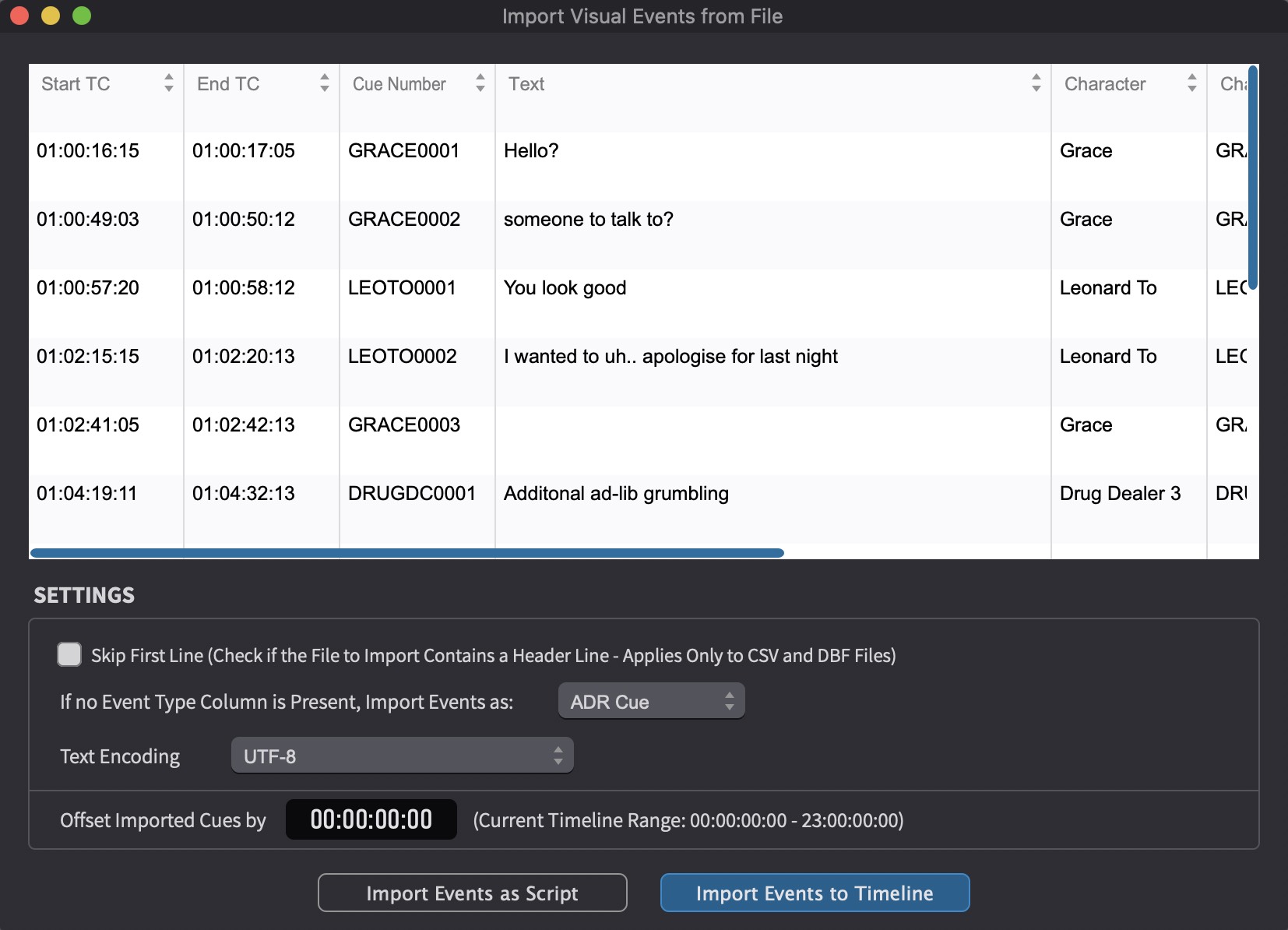Bulk Visual Event Import from a Subtitle File
Setting the Timeline frame rate
It is vital that the frame rate of the Timeline is set correctly before importing cues. Failure to do so, will cause discrepancies in the duration & location of the cues - especially when the correct frame-rate video is eventually added to the Timeline. Setting the frame rate is done either automatically by simply adding video to the current Timeline; or if no video is present, by clicking the pencil icon to the top right of the active Timeline & in the Edit Timeline Settings window that appears, selecting the relevant frame rate from the TC Frame Rate pulldown menu.
Importing
Select File → Import Events from File and choose a .srt or .stl Subtitle file from the browser window & click Open.
The 'Import Visual Events from File' window
The Import Visual Events from File window will appear next.
The window is separated into two sections: the top section shows the column mapping of the Visual Events in a table-like manner; and the bottom shows the import settings.
 {width=80%}
{width=80%}
Visual Event Column mapping table
The headings will automatically set correctly & locked.
Visual Event Import Settings section
The bottom half of the Import Visual Events from File window contains a number of import related settings.
 {width=80%}
{width=80%}
Skip First Line - this setting is not applicable for subtitle file import.
Set the If no Event Type Column is Present, Import Events as: field to Marker.
Text Encoding - Set this to UTF-8 or the same setting as used when exporting the subtitle file.
If you are unsure of the exact text encoding format of the file, UTF-8 is a good default starting point as it also supports non-ASCII characters like Umlauts and other non-US character sets.
Every text file has an internal text encoding. The encoding determines how the file content should be interpreted. A text file basically is nothing more than a sequence of bytes and Video Sync needs to know which character set to use to decode the bytes into human readable characters. That is why it is important to match the same export & import Text Encoding types. It is unfortunately not easily possible to detect the character set programmatically (it usually works for UTF-16 and for UTF-8). If you're uncertain about the text encoding used in the text file, try different text encodings until the best results are achieved. Problems will usually be visible with special characters like German Umlauts for example.
Offset Imported Cues by - add or subtract a defined timecode offset to all cues when importing them. For example, if the timeline start timecode is set to 10:00:00:00, but the imported cue sheet references a 1 hour start, you could simply enter 09:00:00:00 in the text box here to offset all imported cues by 9 hours.
Negative values are also permitted.
To bulk import the cues into the timeline, click the Import Events To Timeline button. The events will appear in the Timeline & in the Event list.
